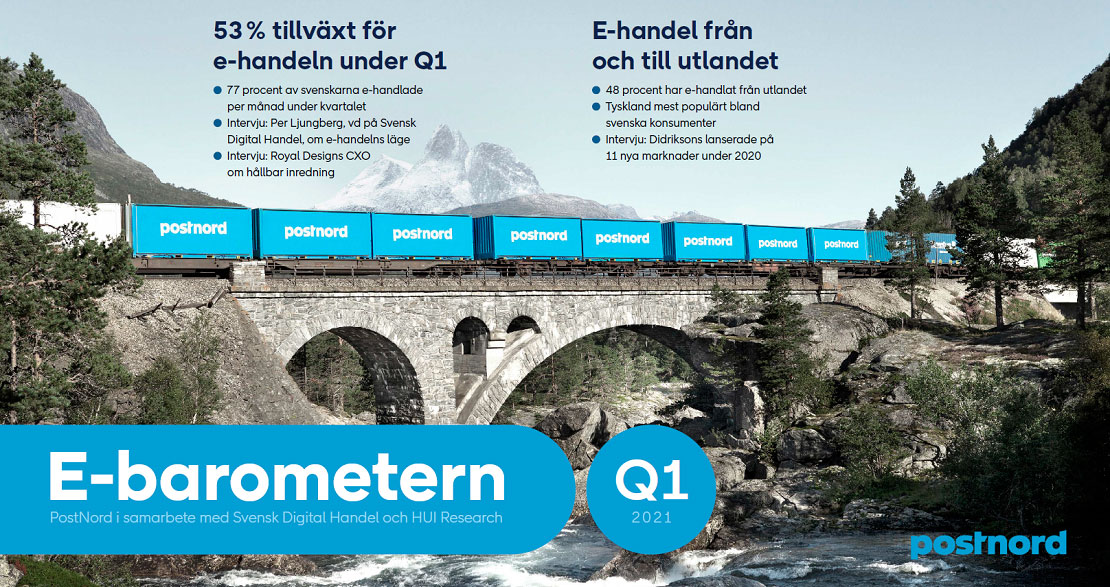
Groceries and home furnishings continue to top the growth list
As before during the pandemic, the grocery trade is in top with 128% growth during the first quarter. We still have spent a lot of time at home and spend on it. The furniture and home furnishings trade increased by as much as 81%. In step with increased vaccination and reduced spread of infection, on the other hand, restaurant visits, activities and travel are forecast to take back shares during the latter half of the year.
The industry where most consumers have shopped online is beauty and health, the main reason for this is the amount of pharmacy goods that have been bought online recently.
Flexibility is more important than speed and durability
One question in the E-barometer was about taking a stand on four different delivery alternatives for a garment. One fast, one flexible, one precise and a durable one that takes a little longer. 32% chose the flexible delivery option parcel box, which is advancing rapidly. The trend has been around for a while and will probably become an even more popular alternative when more people get parcel boxes nearby where you still have errands and visit.
Didriksons’ strategy for D2C
Didriksons has been manufacturing outerwear for over 100 years. 2020 was an expansive year with eleven new markets. They chose to enter several markets at the same time and then learn lessons from it. This year the focus is on analyzing and developing the markets.
When the Corona pandemic struck and retailers stopped completing their orders and wanted to cancel, Didriksons quickly realized that they needed to increase the pace of direct to consumer (D2C). Petra Sabo, who is Head of DTC Business, says that the whole purpose and strategy of D2C for Didriksons is to strengthen the brand and create interest in the products and the brand among consumers, so that the retailers in turn will have an increased interest.
Reaching out to consumers in a broad way is something that is more relevant for more brands to look at as e-commerce continues to develop.
Read the full E-barometer report (in Swedish).